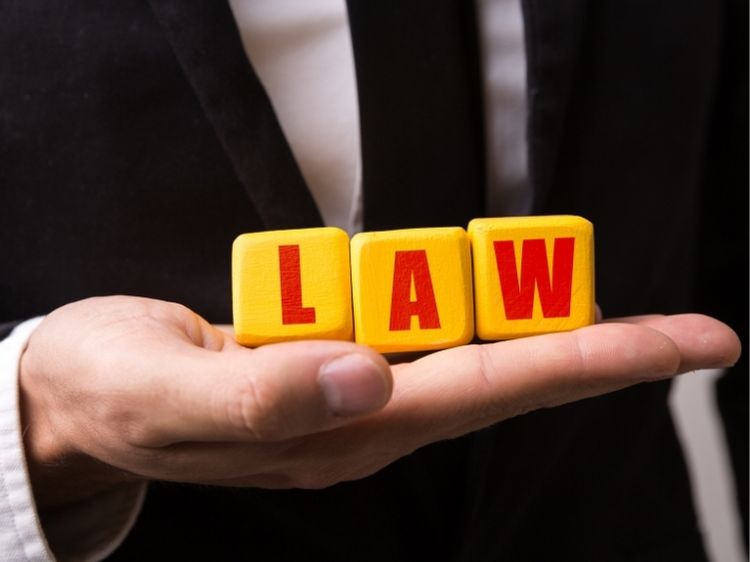Unpacking Product Liability Lawsuit Cases: What You Need to Know
Ever bought a product that didn’t quite live up to its promise? Or worse, have you or someone you know been injured by a faulty product? If so, you’re not alone. Product liability lawsuit cases are a common legal battleground where consumers seek justice for harm caused by defective products. In this article, we’ll dive deep into what these cases entail, the types of claims involved, and real-world examples that highlight the importance of understanding your rights as a consumer. Buckle up because we’re about to unravel the complexities of product liability lawsuits in a way that’s easy to grasp and incredibly informative.
What Are Product Liability Lawsuit Cases?
Product liability lawsuit cases are legal actions taken by consumers against manufacturers, distributors, suppliers, or retailers who have produced or sold a defective product. These cases arise when a product causes injury or harm to a consumer, and the injured party seeks compensation for damages. The core of these lawsuits is the principle that products should meet the ordinary expectations of consumers, and when they don’t, someone needs to be held accountable.
Types of Product Liability Claims
Product liability cases typically fall into three main categories: manufacturing defects, design defects, and failure to warn (also known as marketing defects). Each category represents a different way in which a product can be considered defective.
1. Manufacturing Defects
Manufacturing defects occur when a product is not made according to its intended design. These defects usually affect only a small number of products in a production line. For instance, a car with a faulty brake system due to improper installation at the factory would fall under this category. In such cases, the manufacturer can be held liable for any injuries resulting from the defect.
2. Design Defects
Design defects are inherent flaws in the product’s design that make it unsafe for use, even if it is manufactured perfectly. A classic example is the Ford Pinto case, where the car’s design made it prone to bursting into flames upon impact. Unlike manufacturing defects, design defects affect all units of a product. Lawsuits in this category aim to prove that a safer alternative design was feasible and could have prevented the harm.
3. Failure to Warn (Marketing Defects)
Failure to warn, or marketing defects, arise when a product lacks adequate instructions or warnings about its proper use, leading to consumer injury. For example, a medication that doesn’t include warnings about potential side effects could be grounds for a lawsuit if a consumer suffers as a result. In these cases, the focus is on the manufacturer’s responsibility to inform consumers of any risks associated with the product.
High-Profile Product Liability Lawsuit Cases
To better understand the impact of product liability lawsuits, let’s explore some high-profile cases that have shaped the landscape of consumer rights.
1. The McDonald’s Hot Coffee Case
One of the most famous product liability cases is the McDonald’s hot coffee lawsuit. In 1992, Stella Liebeck suffered third-degree burns after spilling hot coffee on herself. The coffee was served at a temperature far higher than what is considered safe. Liebeck sued McDonald’s, and the jury awarded her nearly $3 million in damages. This case sparked a nationwide debate on frivolous lawsuits but also highlighted the importance of product safety.
2. Johnson & Johnson’s Talcum Powder Lawsuits
Johnson & Johnson faced thousands of lawsuits from consumers who claimed that the company’s talcum powder products caused ovarian cancer. Plaintiffs argued that the company failed to warn consumers about the potential risks associated with talc. In 2018, a Missouri jury awarded $4.7 billion to 22 women who developed cancer after using the product. This case underscores the significance of warning consumers about possible dangers linked to everyday products.
3. The Ford Pinto Case
As mentioned earlier, the Ford Pinto case is a landmark in product liability law. The car’s design made it susceptible to catching fire in rear-end collisions, leading to multiple fatalities. The case revealed that Ford was aware of the design flaw but chose not to fix it due to cost concerns. The resulting lawsuits led to significant changes in vehicle safety standards and highlighted the ethical responsibilities of manufacturers.
The Legal Process in Product Liability Lawsuit Cases
Understanding the legal process in product liability cases can help you navigate these complex waters if you ever find yourself in such a situation. Here’s a step-by-step breakdown:
1. Filing the Complaint
The first step in a product liability lawsuit is filing a complaint. This legal document outlines the plaintiff’s allegations against the defendant (the manufacturer, distributor, etc.) and the damages sought. The complaint must establish that the product was defective, the defect caused the injury, and the plaintiff suffered damages as a result.
2. Discovery Phase
After the complaint is filed, both parties enter the discovery phase. During this period, evidence is gathered, including documents, expert testimony, and depositions. This phase is crucial for building a strong case, as it allows both sides to assess the strength of the other’s arguments.
3. Settlement Negotiations
Many product liability cases are settled out of court. Settlement negotiations involve both parties discussing potential compensation to avoid the time and expense of a trial. If a fair settlement is reached, the case is resolved without going to court. However, if negotiations fail, the case proceeds to trial.
4. Trial
If the case goes to trial, both sides present their evidence and arguments before a judge or jury. The trial process includes opening statements, witness testimonies, cross-examinations, and closing arguments. The judge or jury then deliberates and delivers a verdict. If the plaintiff wins, the court will determine the amount of damages to be awarded.
5. Appeals
In some cases, the losing party may choose to appeal the verdict. An appeal is a request for a higher court to review the case and determine if any legal errors were made during the trial. The appeals process can extend the duration of the case but provides an opportunity for the losing party to seek a different outcome.
Key Considerations in Product Liability Lawsuit Cases
When pursuing a product liability lawsuit, several key considerations can influence the outcome:
1. Statute of Limitations
Each state has a statute of limitations for filing product liability claims. This time limit varies but typically ranges from one to six years. It’s crucial to file your lawsuit within this period; otherwise, you may lose your right to seek compensation.
2. Burden of Proof
In product liability cases, the burden of proof lies with the plaintiff. This means you must prove that the product was defective, the defect caused your injury, and you suffered damages as a result. Gathering strong evidence, such as medical records, expert testimony, and the defective product itself, is essential to meeting this burden.
3. Comparative Negligence
Some states follow the doctrine of comparative negligence, which means that if the plaintiff is partially at fault for their injury, their compensation may be reduced. For example, if you were injured by a defective product but failed to follow the manufacturer’s instructions, your damages could be reduced based on your level of responsibility.
FAQs About Product Liability Lawsuit Cases
Q1: What should I do if I’m injured by a defective product?
If you’re injured by a defective product, the first step is to seek medical attention. Document your injuries and keep records of all related expenses. Preserve the defective product, as it may serve as crucial evidence in your case. Consult with a product liability attorney to discuss your legal options.
Q2: Can I file a product liability lawsuit if I didn’t purchase the product?
Yes, you can file a product liability lawsuit even if you didn’t purchase the product. For instance, if you’re injured by a product that a friend or family member owns, you may still have grounds for a claim.
Q3: How long does a product liability lawsuit take?
The duration of a product liability lawsuit varies depending on the complexity of the case, the amount of evidence, and whether the case goes to trial. Some cases are resolved in a few months, while others may take several years to reach a conclusion.
Q4: What damages can I recover in a product liability lawsuit?
In a product liability lawsuit, you may be entitled to recover various damages, including medical expenses, lost wages, pain and suffering, and punitive damages. Punitive damages are awarded in cases where the defendant’s conduct was particularly egregious.
Conclusion
Product liability lawsuit cases are a vital tool for protecting consumers from defective products and ensuring that manufacturers are held accountable for the safety of their goods. Whether it’s a faulty car, a dangerous household item, or a hazardous medication, these lawsuits play a crucial role in safeguarding public health and safety. If you or someone you know has been harmed by a defective product, understanding your legal rights and the steps involved in filing a claim can make all the difference in achieving a just outcome. Stay informed, stay safe, and remember that the law is on your side when it comes to product liability.
Authoritative Links






